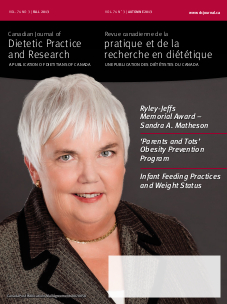Abstract
Purpose: Measured resting metabolic rate (RMR) was compared with predicted RMR in a sample of young, non-obese women.
Methods: In 52 women aged 19 to 30 with a body mass index of 16 to 29 kg/m2, RMR was measured with a MedGem indirect calorimeter and predicted with five commonly used equations: the Harris-Benedict (1919), Mifflin (1989), Owen (1985), Schofield weight (1985), and Schofield weight and height (1985) equations. Measured RMR and predicted RMR were compared through the use of various measures.
Results: In comparison with the measured RMR, the RMR predicted with four of the five equations was significantly higher (by 16 to 225 kcal/day, p<0.001). At the group level, the Owen equation performed best and captured the greatest proportion of individuals (65%) for whom predicted RMR differed from measured RMR by less than 10%. With the other four equations, residuals exceeded 10% for more than two-thirds of participants. For the Harris-Benedict, Mifflin, and Owen equations, every 100 kcal/day increase in measured RMR was associated with a 6% to 8% decrease in error. The optimal prediction range (within 10% of the measured RMR) was different for each: Owen equation 1105 to 1400 kcal/day, Mifflin equation 1280 to 1595 kcal/day, and Harris-Benedict equation 1345 to 1630 kcal/day.
Conclusions: Prediction equations should be modified according to the amount of corresponding percentage error. Where possible, RMR should be measured. Barring this, the Owen equation should be used for young, non-obese women.
Résumé
Objectif: Le taux métabolique (TMR) mesuré a été comparé au TMR estimé dans un échantillon de jeunes femmes non obèses.
Méthodes: Chez 52 femmes âgées de 19 à 30 ans ayant un indice de masse corporelle de 16 à 29 kg/m2, le TMR a été mesuré avec un calorimètre indirect MedGem et estimé à l’aide de cinq équations couramment utilisées : Harris-Benedict (1919), Mifflin (1989), Owen (1985), Schofield (poids) (1985) et Schofield (poids et taille) (1985). Le TMR mesuré et le TMR estimé ont été comparés au moyen de diverses mesures.
Résultats: Comparativement au TMR mesuré, le TMR estimé à l’aide de quatre des cinq équations était significativement plus élevé (de 16 à 225 kcal/jour, p < 0,001). À l’échelle du groupe, c’est la formule d’Owen qui a donné les meilleurs résultats. En effet, pour 65 % des personnes, la différence entre le TMR estimé et le TMR mesuré était de moins de 10 % avec cette équation. Avec les quatre autres équations, l’écart était supérieur à 10 % pour plus des deux tiers des participants. Dans le cas des équations de Harris-Benedict, de Mifflin et d’Owen, chaque augmentation de 100 kcal/jour du TMR mesuré était associée à une diminution de 6 à 8 % de l’erreur. La plage de prévision optimale (moins de 10 % de différence avec le TMR mesuré) était différente pour chaque équation : Owen, de 1105 à 1400 kcal/jour; Mifflin, de 1280 à 1595 kcal/jour; et Harris-Benedict, de 1345 à 1630 kcal/ jour.
Conclusions: Les équations de prédiction devraient être modifiées en fonction du pourcentage de l’erreur correspondant. Le TMR devrait être mesuré lorsque possible. Sinon, la formule d’Owen devrait être employée chez les jeunes femmes non obèses.



